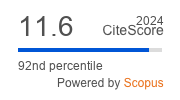AN EFFECTIVE UNDESIRED CONTENT FILTRATION AND PREDICTIONS FRAMEWORK IN ONLINE SOCIAL NETWORK
DOI:
https://doi.org/10.29284/ijasis.2.2.2016.1-8Keywords:
Online Social Network, Unwanted Content, Content Classification, Filtered WallsAbstract
Online Social Networks (OSNs) is major prevalent interactive media in current days to divide, collective, and allocate an essential amount of human life messages. In OSNs, messages filtering can also be worn for a dissimilar, more reactive, meaning. It is happening because of the alternative of posting or remarking different posts on fastidious open/private locales, brought in General Messages. Messages separating can thusly be utilized to give clients the fitness to naturally control the messages composed on their messages, by sifting through disposed of messages. Facebook enables clients to state to post messages (i.e., companions, characterized gatherings of companions or companions of companions). To overcome the problems, the proposed mechanism implements an estimated automated framework, is defined Filtered Wall (FW), to filter discarded content from OSN user contents. The objective of paper is to utilize effective classification technique to avoid overpowered by unsuccessful messages. Content filtering can additionally misused for a disparate, more responsive for OSNs. The procedures outline of a framework gives adaptable substance based content filtering for OSNs, in light of ML strategy. It sets up the connections similarly with the condition of the expertise in content-based separating based personalization for OSNs down alongside web substances. The focal segments of the Filtered Wall scheme are the Content Based Messages Filtering (CBMF) and the Short Text Classifier essentials. Based on experimental evaluations, proposed method performs good precision, recall and F1 score on overall dataset.
References
M. Chau, and H. Chen, A Machine Learning Approach to Web Page Filtering Using Content and Structure Analysis, Decision Support Systems, Vol. 44, No. 2, 2008, pp. 482-494.
R.J. Mooney, and L. Roy, Content-Based Book Recommending Using Learning for Text Categorization, Proceedings of 5th ACM Conference on Digital Libraries, 2000, pp. 195-204.
F. Sebastian, Machine Learning in Automated Text Categorization, ACM Computing Surveys, Vol. 34, No, 1, 2002, pp. 1-47.
A. Adomavicius, and G. Tuzhilin, Toward the Next Generation of Recommender Systems: A Survey of the State-of-the-Art and Possible Extensions, IEEE Transaction on Knowledge and Data Eng, Vol. 17, No. 6, 2005, pp. 734-749.
G. Amati, and F. Crestani, Probabilistic Learning for Selective Dissemination of Messages, Messages Processing and Management, Vol. 35, No. 5, 1999, pp. 633-654.
P.J. Denning, Electronic Junk, Comm. ACM, Vol. 25, No. 3, 1982, pp. 163-165.
P.W. Foltz, and S.T. Dumais, Personalized Messages Delivery: An Analysis of Messages Filtering Methods, Communication ACM, Vol. 35, No. 12, 1992, pp. 51-60.
Y. Zhang, and J. Callan, Maximum Likelihood Estimation for Filtering Thresholds, Proceedings of 24th Annual International ACM SIGIR Conference of Research and Development in Messages Retrieval, 2001, pp. 294-302.
G. Prakash, B, Vyas, and V.R. Kethu, Secure & Efficient Audit Service Outsourcing For Data Integrity In Clouds, International Journal of MC Square Scientific Research, Vol. 6, No. 1, 2014, pp. 50-60.
https://netbeans.org/downloads/
https://www.java.com/
www.mysql.com/downloads/
http://tomcat.apache.org/
http://www.cs.waikato.ac.nz/ml/weka/downloading.html
Downloads
Published
Issue
Section
License
This work is licensed under a Creative Commons Attribution 4.0 International License, which permits unrestricted use, distribution, and reproduction in any medium, provided the original work is properly cited.











